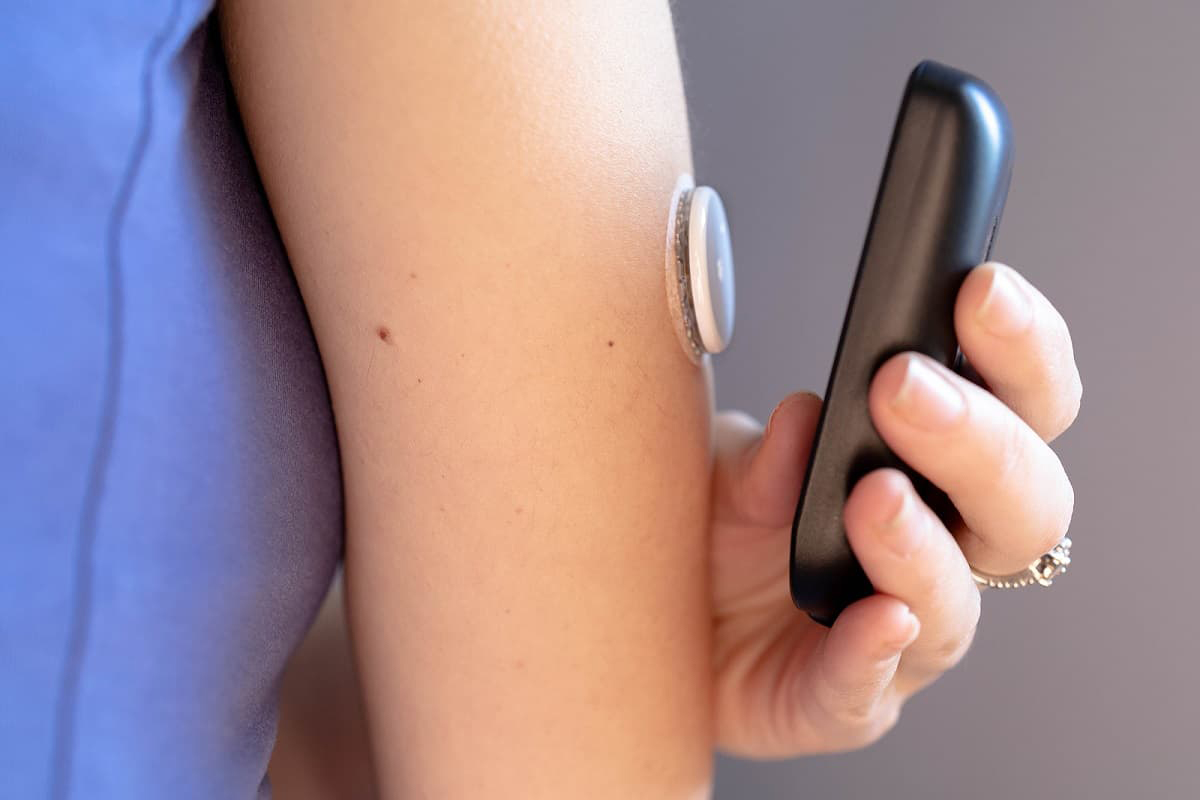Home>Finance>How Much Does It Cost To Remove A Mole Without Insurance


Finance
How Much Does It Cost To Remove A Mole Without Insurance
Published: November 12, 2023
Find out the average cost of removing a mole without insurance and explore financing options to manage the expenses. Learn more about mole removal finances.
(Many of the links in this article redirect to a specific reviewed product. Your purchase of these products through affiliate links helps to generate commission for LiveWell, at no extra cost. Learn more)
Table of Contents
- Introduction
- Understanding Moles
- Options for Mole Removal
- Factors Affecting the Cost of Mole Removal
- Average Cost of Mole Removal Without Insurance
- Different Methods of Mole Removal and Their Cost
- Additional Costs to Consider
- Risks and Complications of Mole Removal
- How to Save Money on Mole Removal Without Insurance
- Conclusion
Introduction
Having moles on your skin is a common occurrence for many individuals. While most moles are harmless, some may cause discomfort or affect your self-confidence due to their appearance or location. If you’ve decided to have a mole removed, one of the main considerations you may have is the cost. This article will explore the various factors that influence the cost of mole removal, particularly without insurance.
Before delving into the cost aspect, it’s crucial to understand what moles are and why they might need to be removed. Moles are clusters of pigmented cells that can appear on any part of the body. They can be flat or raised and may vary in size, shape, and color. While most moles are benign, some may develop into skin cancer, known as melanoma. It’s essential to monitor any changes in your moles, such as sudden growth, irregular borders, or changes in color, as these could indicate potential health issues.
When it comes to mole removal, there are several options available, ranging from home remedies to professional procedures. The choice of treatment depends on factors like the size, location, and type of mole, as well as your personal preferences and budget. It’s essential to consult with a dermatologist or skin specialist to determine the most suitable method for your particular situation.
Now, let’s delve into the various factors that can affect the cost of mole removal without insurance. Understanding these factors will help you make an informed decision and better manage your finances.
Understanding Moles
Before considering mole removal, it’s important to have a basic understanding of what moles are and what they entail. Moles are a common type of skin growth, made up of clusters of pigmented cells known as melanocytes. These cells produce melanin, the pigment that gives color to your skin, hair, and eyes.
Moles can appear at any age and on any part of the body. They can range in size, color, and shape. Most moles are harmless and don’t require any medical intervention. However, some moles may change in appearance or exhibit concerning characteristics, requiring further evaluation and possible removal.
While the majority of moles are benign, it’s essential to keep an eye on any changes in size, shape, color, or texture. These changes could indicate potential issues and may require medical attention. It’s recommended to perform regular self-examinations of your skin to monitor any changes in your moles or the appearance of new ones.
Some common types of moles include:
- Common Moles: These moles are usually symmetrical, have well-defined edges, and are uniform in color.
- Dysplastic Moles: Also known as atypical moles, these are larger in size and may have irregular borders and uneven color distribution. Dysplastic moles have a higher risk of developing into melanoma.
- Junctional Moles: These moles are typically flat and brown in color and form at the junction of the epidermis and dermis layers of the skin.
- Intradermal Moles: These moles are usually flesh-colored or slightly pigmented and often have a raised, dome-like appearance.
If you notice any changes in your moles or have concerns about a particular mole, it’s important to consult with a dermatologist or skin specialist. They can evaluate the mole, determine if it poses any risks, and recommend the appropriate course of action, including mole removal if necessary.
Options for Mole Removal
When it comes to mole removal, there are several options available, ranging from home remedies to professional procedures. The choice of treatment depends on various factors, including the type of mole, its location, and your personal preferences. It’s important to consult with a dermatologist or skin specialist to determine the most suitable method for your specific situation. Here are some common options for mole removal:
- Excisional Surgery: This surgical procedure involves cutting out the mole and stitching the wound. It is usually used for larger moles or those suspected of being cancerous. Local anesthesia is administered to numb the area before the procedure.
- Shave Excision: In this method, the mole is shaved off at the skin surface using a scalpel or similar tool. This technique is typically used for raised moles or those in easily accessible areas. It usually requires only local anesthesia.
- Cauterization: This procedure involves burning the mole with an electric current or a special caustic solution. Cauterization is typically used for small, raised moles and may leave a small scar.
- Cryotherapy: In cryotherapy, the mole is frozen with liquid nitrogen. This freezing process destroys the mole’s cells, causing it to gradually fall off. It is commonly used for small, superficial moles.
- Laser Removal: Laser treatment uses focused light to break down the pigmented cells in the mole. This option is suitable for smaller, flat moles and may require multiple sessions for optimal results.
- Home Remedies: Some individuals may opt for natural remedies or over-the-counter products to attempt mole removal at home. However, it’s important to note that these methods are generally not recommended, as they lack scientific evidence of effectiveness and can potentially cause complications.
Each method has its own advantages, disadvantages, and associated costs. Your dermatologist will guide you in selecting the most appropriate option based on the characteristics of your mole and your specific needs.
Factors Affecting the Cost of Mole Removal
The cost of mole removal can vary significantly depending on several factors. Understanding these factors can help you better estimate the potential expenses involved. Here are some key factors that affect the cost of mole removal:
1. Type of removal method: The chosen method of mole removal plays a significant role in determining the cost. Surgical procedures, such as excisional surgery, may cost more compared to non-surgical options like cryotherapy or laser removal.
2. Size and complexity of the mole: Larger and more complex moles may require additional time and effort to remove, which can affect the cost. The extent of the procedure and the expertise needed to remove the mole may also impact the overall cost.
3. Number of moles: If you need to have multiple moles removed, the total cost will likely be higher. Some healthcare providers offer discounted rates for multiple mole removals, so it’s worth inquiring about any package deals.
4. Location of the mole: The location of the mole on the body can influence the cost of removal. Moles in sensitive or hard-to-reach areas may require extra precautions or specialized techniques, which can increase the overall cost.
5. Healthcare provider’s experience and expertise: The skill and experience of the healthcare professional performing the mole removal can impact the cost. Specialists with a high level of expertise may charge higher fees for their services.
6. Geographic location: The cost of mole removal can vary depending on the geographical location. Healthcare costs can differ significantly from one region to another, so it’s important to consider the local rates when estimating the cost.
7. Additional tests or procedures: In some cases, additional tests or procedures may be needed before or after the mole removal, such as a biopsy or follow-up appointments. These additional services can contribute to the overall cost.
It’s essential to discuss these factors with your dermatologist or healthcare provider to get a more accurate estimate of the cost involved. They will be able to evaluate your specific situation and provide a personalized cost assessment based on the factors mentioned above.
Average Cost of Mole Removal Without Insurance
The cost of mole removal without insurance can vary depending on several factors, as discussed earlier. However, it’s important to note that the actual cost can only be determined by consulting with a healthcare provider or dermatologist. The cost can also vary depending on the location and type of healthcare facility or specialist you choose.
On average, the cost of mole removal without insurance can range from $100 to $500 per mole. This estimate includes the cost of the procedure itself as well as any necessary follow-up appointments or treatments. However, it’s important to remember that this is a general range, and the actual cost may be higher or lower based on individual circumstances.
The costs mentioned above are for typical mole removal procedures. More complex cases, such as larger or deeply embedded moles, may incur higher costs. Additionally, if any additional tests, biopsies, or pathology evaluations are required, those can add to the overall cost as well.
It’s worth noting that some healthcare providers may offer package deals or discounts for multiple mole removals. It’s advisable to inquire about any available discounts or promotions when discussing the cost with your healthcare provider.
If you don’t have insurance coverage, it’s important to thoroughly research healthcare providers in your area and compare their pricing. While the cost is an important consideration, it’s also crucial to prioritize the expertise, experience, and reputation of the healthcare professional performing the mole removal.
Keep in mind that the figures provided here are average estimates and can vary depending on your specific location and circumstances. It’s always best to consult with a healthcare provider or dermatologist for an accurate and personalized cost assessment.
Different Methods of Mole Removal and Their Cost
There are several methods available for mole removal, each with its own advantages, disadvantages, and associated costs. The choice of method depends on various factors, including the type of mole, its location, and your personal preferences. Here are some common methods of mole removal and their estimated costs:
1. Excisional Surgery: This surgical method involves cutting out the mole and stitching the wound. The cost of excisional surgery can range from $150 to $500 or more, depending on the complexity of the procedure, the size of the mole, and the expertise of the healthcare provider.
2. Shave Excision: In this method, the mole is shaved off at the skin surface using a scalpel or a similar tool. The cost of shave excision can range from $100 to $350, depending on the size and location of the mole.
3. Cauterization: This procedure involves burning the mole with an electric current or a special caustic solution. Cauterization may be a more cost-effective option, with prices ranging from $100 to $300 or more, depending on the complexity of the mole and the healthcare provider’s fees.
4. Cryotherapy: Cryotherapy uses liquid nitrogen to freeze and destroy the mole. The cost of cryotherapy typically ranges from $75 to $350 per session, with additional treatments required for complete removal.
5. Laser Removal: Laser treatment uses focused light to break down the pigmented cells in the mole. Laser mole removal can cost between $200 and $800 or more per session, depending on factors such as the size of the mole and the number of sessions required.
It’s important to note that these cost estimates are approximate and can vary depending on various factors, including the location and reputation of the healthcare provider, the complexity of the procedure, and any additional services or follow-up appointments required.
When contemplating mole removal, it’s essential to consult with a dermatologist or skin specialist who can assess your specific situation and recommend the most suitable method. They will provide you with a personalized cost estimate based on the factors mentioned above and any additional considerations specific to your case.
Additional Costs to Consider
When budgeting for mole removal without insurance, it’s important to consider not only the direct costs associated with the procedure itself but also any additional expenses that may arise. Here are some additional costs to consider:
1. Consultation Fee: Many healthcare providers charge a consultation fee for the initial evaluation of your mole. This fee can range from $50 to $200 or more, depending on the healthcare provider and location.
2. Biopsy or Pathology Evaluation: In some cases, a biopsy or pathology evaluation may be recommended to determine if the mole is cancerous or precancerous. This additional testing can incur additional costs, typically ranging from $100 to $300 or more.
3. Follow-up Appointments: Depending on the extent of the mole removal procedure, follow-up appointments may be necessary to monitor healing, remove stitches, or perform any necessary post-operative care. The cost of these appointments can vary, ranging from $50 to $200 or more per visit.
4. Prescription Medications or Dressings: After the mole removal, your healthcare provider may prescribe medications or recommend specific dressings to aid in the healing process. Depending on your insurance coverage or pharmacy costs, these medications and dressings can add to the overall cost.
5. Scar Treatment or Management: Mole removal may result in scarring, especially with more invasive methods like excisional surgery. If you desire scar treatment or management, additional costs may be involved. These can include topical creams, silicone gel sheets, or laser treatments, with prices varying depending on the method chosen.
6. Transportation and Time Off Work: Don’t forget to consider the cost of transportation to and from the healthcare facility, as well as any time off work you may need for the procedure and recovery. These indirect costs should be factored into your overall budget.
It’s important to discuss these potential additional costs with your healthcare provider during the initial consultation. They can provide you with a more accurate estimate based on your specific situation and help you plan accordingly.
Risks and Complications of Mole Removal
While mole removal is generally a safe procedure, it’s important to be aware of the potential risks and complications that can arise. Understanding these risks is crucial in making an informed decision about whether to proceed with mole removal. Here are some common risks and complications associated with mole removal:
1. Scarring: Depending on the method of removal and individual healing factors, there is a possibility of scarring after mole removal. This is especially true for more invasive procedures like excisional surgery. It’s important to discuss scar management options with your healthcare provider prior to the procedure.
2. Infection: Any surgical procedure carries a risk of infection. It’s essential to follow proper aftercare instructions to minimize the risk of developing an infection. Signs of infection include increased pain, redness, swelling, and pus at the site of removal. If you suspect an infection, consult your healthcare provider promptly.
3. Bleeding: Some methods of mole removal, such as excisional surgery, may involve cutting into the skin, which can lead to bleeding. It’s rare for bleeding to be significant, but it’s important to apply gentle pressure to stop any bleeding and consult your healthcare provider if it persists or worsens.
4. Pain and Discomfort: Mole removal can cause some pain and discomfort, especially during the healing process. Your healthcare provider may recommend over-the-counter pain medications or prescribe stronger options if needed. However, it’s crucial to communicate any excessive or worsening pain to your healthcare provider.
5. Pigment Changes: In rare cases, the removal of a mole may cause changes in the pigmentation of the surrounding skin, leaving it lighter or darker. While these changes are usually temporary, they can sometimes be permanent. Discuss this possibility with your healthcare provider prior to the procedure.
6. Allergic Reactions: Some individuals may experience an allergic reaction to the anesthesia, sutures, or other materials used during the procedure. It’s important to inform your healthcare provider of any known allergies beforehand to minimize the risk of an allergic reaction.
It’s crucial to follow all aftercare instructions provided by your healthcare provider to minimize the risk of complications. If you experience any concerning symptoms or complications after mole removal, don’t hesitate to reach out to your healthcare provider for further evaluation and guidance.
How to Save Money on Mole Removal Without Insurance
If you don’t have insurance coverage for mole removal, there are several strategies you can employ to help save money on the procedure. Here are some tips to consider:
1. Shop around for affordable options: Research and compare the prices of different healthcare providers in your area. Look for clinics or specialists that offer competitive rates for mole removal procedures. However, it’s important to prioritize quality and expertise alongside cost when making your decision.
2. Inquire about package deals or discounts: Some healthcare providers may offer package deals or discounts for multiple mole removals or for combining different procedures. Ask about any available promotions or discounts to potentially reduce the overall cost.
3. Consult with dermatology clinics at teaching hospitals: Teaching hospitals or university-affiliated dermatology clinics may have lower costs for procedures as they often offer reduced rates for services. These clinics are typically supervised by experienced dermatologists, ensuring the quality and safety of the procedure.
4. Consider non-surgical options: Non-surgical methods of mole removal, such as cryotherapy or laser treatment, may be more cost-effective compared to surgical procedures like excisional surgery. Discuss the options with your healthcare provider to understand the available choices and their associated costs.
5. Look for dermatology clinics with sliding-scale fees: Some dermatology clinics offer sliding-scale fees based on income, which can help reduce the cost of mole removal. Inquire about such options and provide any necessary documentation to validate your eligibility.
6. Consider financing or payment plans: Some healthcare providers may offer financing options or payment plans to help manage the cost of mole removal. Discuss the possibility of spreading out payments over time to make it more affordable for your budget.
7. Discuss your financial situation with your healthcare provider: Openly communicate your financial constraints with your healthcare provider. They may be able to provide guidance, offer flexible payment arrangements, or suggest alternative treatment options that are more cost-effective.
Remember, while it’s important to save money on mole removal, don’t compromise on the expertise and experience of the healthcare provider. Ensure you’re receiving proper care from a qualified professional to minimize potential risks and ensure the best outcome.
By being proactive and exploring these money-saving strategies, you can make mole removal more affordable and accessible, even without insurance coverage.
Conclusion
Mole removal is a common procedure that many individuals may consider for various reasons, such as discomfort or aesthetic concerns. Understanding the factors that affect the cost of mole removal is crucial in estimating the expenses involved, particularly when you don’t have insurance coverage.
The cost of mole removal without insurance can vary depending on several factors, including the type of removal method, the size and complexity of the mole, the number of moles, the location of the mole, the healthcare provider’s expertise, and the geographic location. It’s essential to consult with a healthcare provider or dermatologist to get an accurate estimate based on your specific situation.
When considering mole removal, it’s important to be aware of the potential risks and complications, such as scarring, infection, bleeding, and pigment changes. Following proper aftercare instructions and seeking prompt medical attention for any concerns can help minimize these risks.
To save money on mole removal without insurance, consider shopping around for affordable options, inquire about package deals or discounts, explore non-surgical methods, and discuss payment plans or financing options with healthcare providers. Balancing cost with quality and expertise is key in ensuring a successful and safe procedure.
Ultimately, the decision to undergo mole removal should be made in consultation with a healthcare provider who can evaluate your specific situation and provide personalized recommendations. By considering the cost, risks, and available options, you can make informed decisions regarding your mole removal journey.














